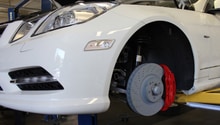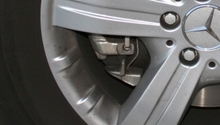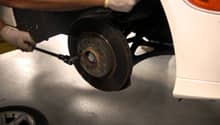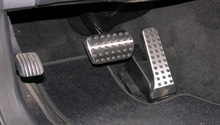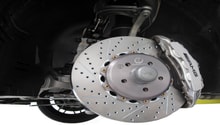Mercedes-Benz C-Class: Why Are My Brakes Noisy?
The braking system operates on the principle of friction between two surfaces of different composition. The system is also tasked with stopping a vehicle weighing several thousand pounds in a relatively short distance. Sometimes the brake noise can just be part of the design, but certain noises indicate potential problems.
This article applies to the Mercedes-Benz C-Class w204 (2007-2014).
Brake system noise can be related to the wheel calipers, rotors, and brake pads. Brake calipers compress the brake pads against the rotors, which creates not only heat, but vibration if the pad is not operating correctly. Over time, rotors can wear unevenly and the surface can become scored/pitted and create vibration. The brake calipers are mounted to the wheel spindles and caliper brackets. These anchor the body of the caliper in place, while the piston is compressed and expanded. If the caliper is not securely mounted to the spindle or caliper bracket, noise and vibration will result.

Materials Needed
- General purpose degreaser
- Brake cleaner
- Water supply/hose
- Toothbrush, or some small scrubbing instrument
Step 1 – Clean your brake pads, rotors, and calipers
Often times, an excessive amount of brake dust and dirt can become lodged between the brake pads and rotors and create noise. You can use a steady stream of water to remove the dust stuck between the components.
Semi-metallic pads (commonly found on high-performance vehicles) are known for squeals because the metallic compound inside of the pad comes into contact with the metal rotor.
Some manufacturers include a "bedding" procedure with their brake pads that helps reduce noise and prolong pad life. This is typically only performed on brake pads designed for high-performance applications. The bedding procedure may include five to ten hard stops from 60 mph to 10 mph.
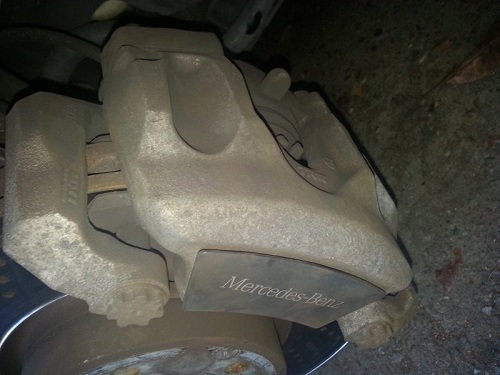
Step 2 – Inspect the brake pads
The Mercedes w204 uses brake wear sensors installed into the brake pads. When the sensor contacts the rotor, a message should display on the gauge cluster, indicating excessive brake wear.
It is important that the pads are installed correctly. Some pads use tabs, mounting ears, and anti-rattle clips to help eliminate brake noise. If these are not in place, the pads will shake and vibrate.
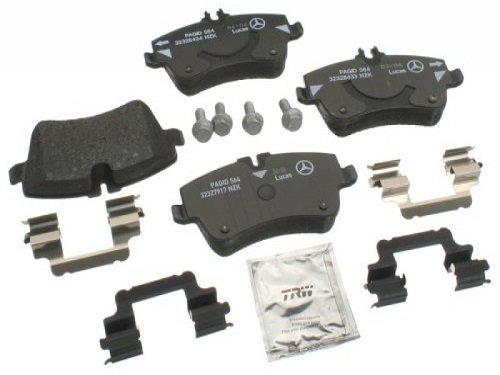
Step 3 – Inspect the brake rotors
Brake rotors will wear unevenly if the caliper pistons and brake pads are not being applied normally. This will create grooves in the rotor that will incorrectly mesh with the brake pads. Some manufacturers create a roughness gauge that can be used to compare with your rotor to determine if the grooving has become excessive.
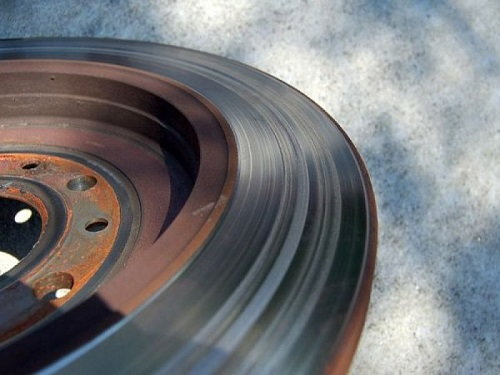
Step 4 – Inspect the brake calipers
Brake calipers come in two different designs: fixed and sliding. The sliding calipers move on pins to engage the brake pads mounted on a caliper bracket, while the fixed calipers are secured in place and use the caliper pistons movement to engage the pads.
If the calipers are not properly tightened to the spindle/mounting bracket or the pins were not greased correctly, the calipers can become bounded and apply uneven pressure to the rotors, causing vibration. Metal-to-metal contact between the sliding pins and calipers will also create noise.
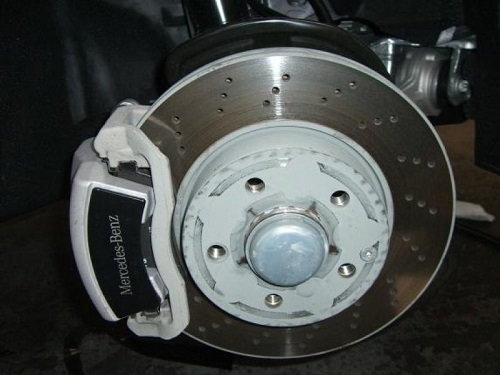
Step 5 – Install a brake lubricant or grease
Any metal-to-metal contact between brake components will cause brake noise. Manufacturers design lubricants and grease to dampen these noises. Manufacturers also create dampening pads that can be stuck onto the brake pads. Check with the brake pad manufacturer and Mercedes to see what particular product they recommend.
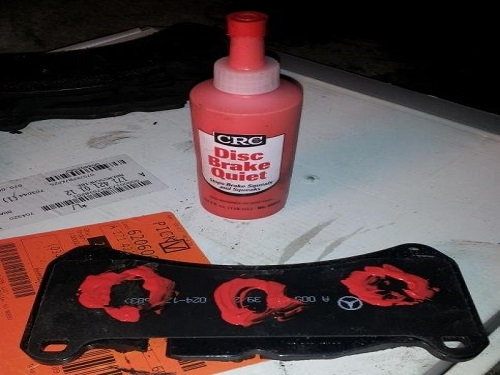
Related Discussions
- Weird Brake Sound - MBWorld.org
- Brake Squealing Noise, Normal - MBWorld.org
- Brake Squeal - MBWorld.org

